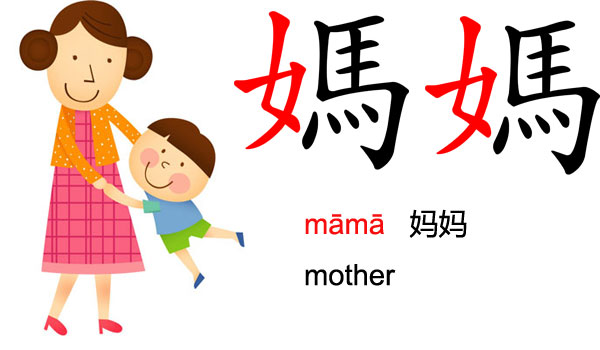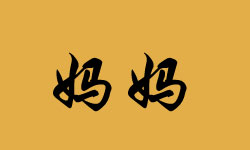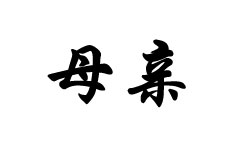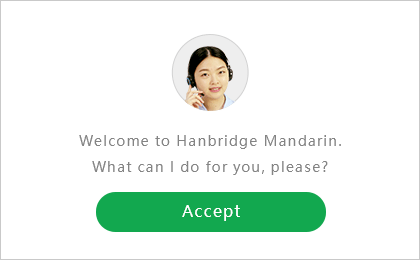How to Write Mother in Chinese Character
Posted by Fifi Yang 20782

Chinese characters developed from pictographs which were formed in a regular way with a certain number of components that are comparable to the 26 letters in the English alphabet. However, these components are different from the letters in the English alphabet in that.
- The components are much larger in number, about 300 in which over 100 are in common use;
- The components are not arranged in a horizontal line but in the upper-lower, left-right, inside-outside and other forms;
- The components are combined in a logical or meaningful way.
Structurally Chinese characters can be classified into two kinds: one-component characters and compound characters. The first kind can be further categorized into pictograms and indicative characters, and the second kind, into associative characters and picto-phonograms. The compound characters are composed of non-component characters or components evolved from them, and the two kinds generally constitute the radicals. Therefore, radicals can be taken as the most basic components of Chinese characters. In addition, radicals also appear as meaningful components in the associative characters and picto-phonograms.
妈(mā) is picto-phonogram, which is a kind of combined character, with one component indicating its meaning, the other indicating its pronunciation. Most of the combined characters are picto-phonograms.
How to write mother in Chinese character?
There are two common ways to express mother in Chinese character.
First, we will translate into 妈(mā)妈(mā) to express mother.

妈 is a character designed to my liking. There's the radical on the left, 女(nǚ) (female), indicating its generic meaning. And there's the phonetic 马(mǎ) (horse) on the right, a quite reliable sound clue, informing us to pronounce it "ma". What's more, the simplification process has left both parts intact and recognizable. This is a character to love as you would your mom.
Second, we will translate into 母(mǔ)亲(qīn) to express mother.

母(mǔ)(mother) pictures a kneeling woman in the ancient and later forms, but that picture is perhaps less obvious in the modern version. The dots represent breasts, suggesting mother. 母(mǔ)also appears in the following words:
母(mǔ)爱(ài) mother + love = maternal love
父(fù)母(mǔ) father + mother = parents
母(mǔ)马(mǎ) mother (female) + horse = mare
母(mǔ)语(yǔ) mother + language = mother tongue
The right component of the modern traditional form of 親(qīn) (parent, relative) is familiar to us. 見(jiàn)of 再(zài)見(jiàn), you will recall, means to see. Think of seeing your parents every day. Regrettably, this clue has disappeared in the simplified form. The simplified character is 亲(qīn).
亲(qīn)also appears in the following words:
父(fù)母(mǔ)亲(qīn)father + mother + relative= parents
父(fù)亲(qīn) father + parent = father
亲(qīn)朋(péng)好(hǎo)友(yǒu) relatives + friends + good + friends = family and friends
亲(qīn)人(rén) relative + person = relative
Here is a video tutorial for you to remember the Titles of Chinese Family Members
At Hanbridge Mandarin, we'd love to help you learn Chinese Character. Contact us to today to schedule a trial lesson of Chinese character course.










